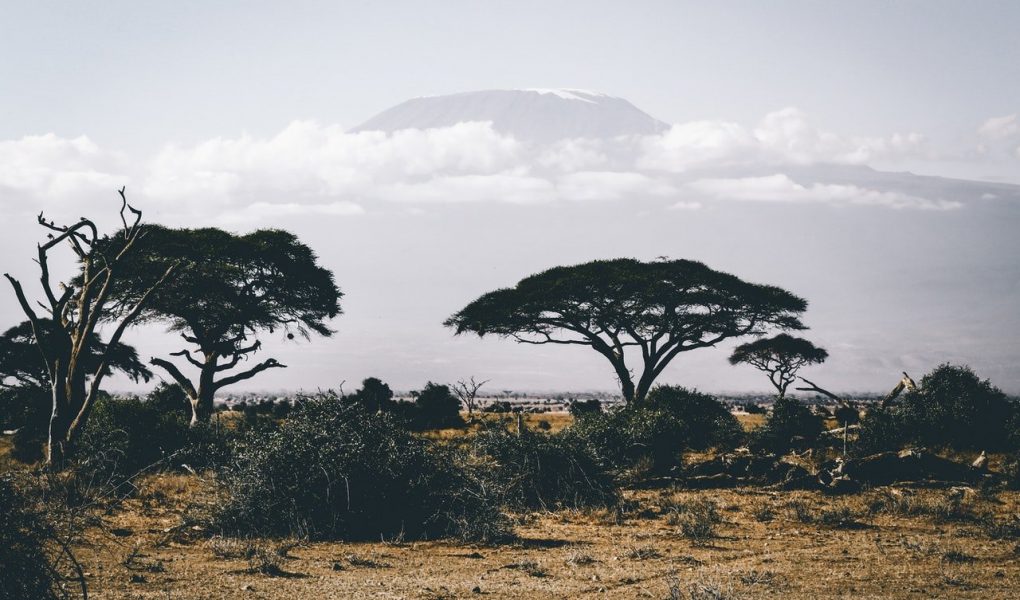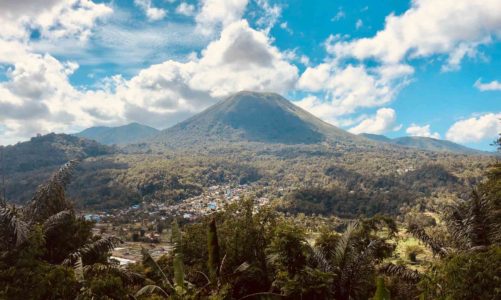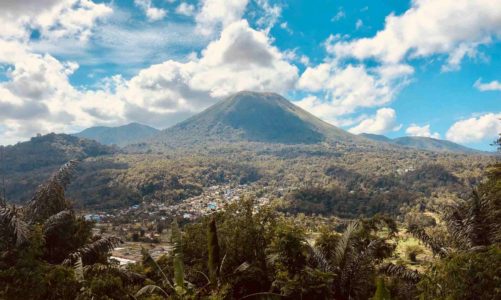Ethiopian coffee is said to be amongst the best single-origin coffee in the world. If you visit special roasteries, specialty cafes, and even Starbucks, you won’t find it hard to get your hands on some great-tasting coffee beans from Ethiopia.
What makes Ethiopian coffee so special? There are many factors that have contributed to the popularity of Ethiopian coffee – which will cover in this guide.
Related article: Indonesian coffee guide.
Did Coffee Originate in Ethiopia?
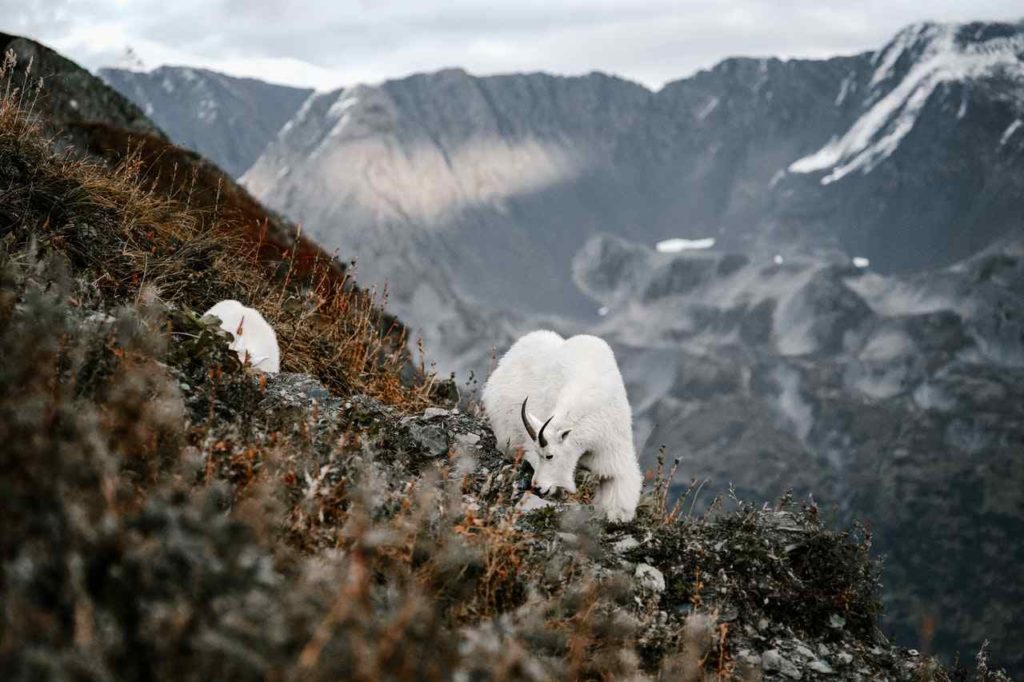
Legend has it that an Abyssinian goat herder from Kaffa, named Kaldi, was the one who discovered the wonders of coffee. One day while he was herding his goats in a mountainous region in Ethiopia near a monastery, he noticed his goats becoming bright-eyed and bushy-tailed after consuming a small shrub that had bright red berries.
He became fascinated by how his goats reacted after eating the bright red berries. Out of curiosity, he tried eating the berries himself. Just like his goats, Kaldi felt a sudden surge of energy and felt more alert. Realizing that the bright red berries gave energizing effects, he then filled his pockets with the berries and rushed home to tell his wife.
His wife advised him to share his discovery with the monks in a nearby monastery. When he arrived, he wasn’t greeted with open arms, but instead with a certain indifference. One monk even called out Kaldi for bringing in “the Devil’s work” and threw the berries into a fire.
But despite that, legend has it that once the berries started roasting in the fire, the aroma of the roasted berries was enough to change the mind of the monks and gave Kaldi’s discovery a second chance. They removed the roasted berries from the fire, crushed them into the grounds, and poured hot water over them.
Everyone at the monastery was able to smell the flavorful aroma of the roasted berries and came to try it. After drinking the “miracle drink”, the monks realized that the drink gave them energy and kept them awake during their spiritual practice. From that time on, they committed to drinking the “miracle drink” every day to help them with their religious devotions.
Ethiopian Coffee History
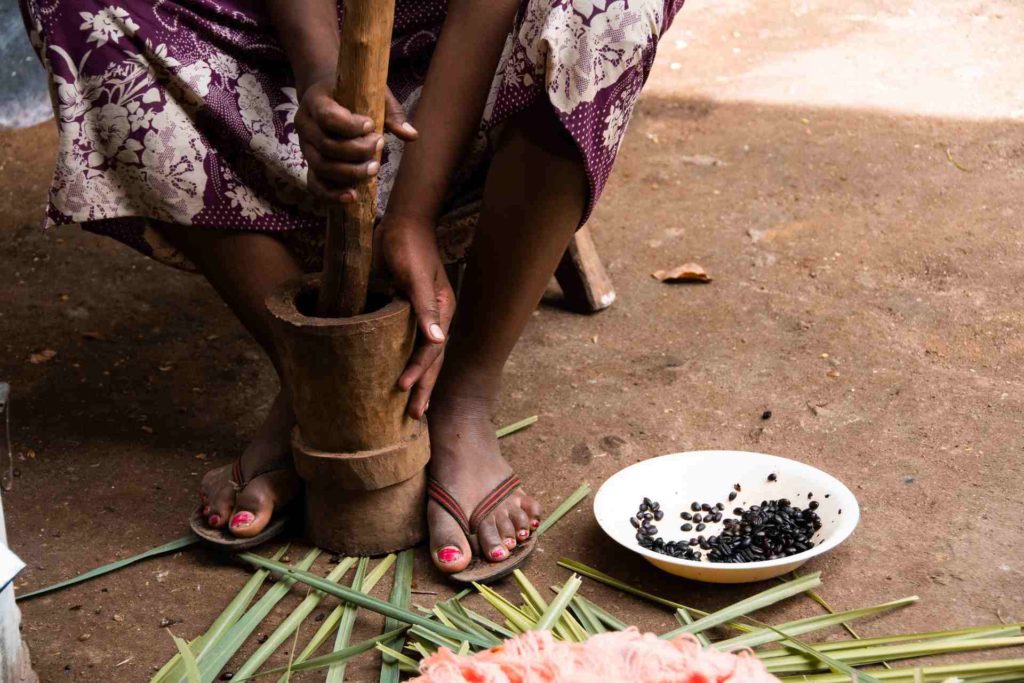
Coffee is one of the most important produce items in Ethiopia. It makes up around 70% of Ethiopia’s economy. About 15 million people of the Ethiopian population benefit from employment in the coffee industry.
Ethiopian coffee was first exported in the 15th century. It is said that Somali merchants brought the coffee to Yemen wherein Sufi mystics would consume the drink for better concentration during their chanting rituals.
But coffee didn’t have a smooth past in Ethiopia, it is said that a few centuries later, the Ethiopian Orthodox Church banned the energizing drink. It was only when Emperor Menelik came into power in the late 19th century that the coffee consumption ban was lifted, all thanks to his fondness for the beverage, and who could blame him.
The great thing when it comes to coffee production in Ethiopia is that a big percentage of the producers are small-scale farmers who embraced the traditional methods of coffee growing and processing. These small-scale farmers generate around 300 kg of coffee every year. They grow “garden coffees” in farmsteads that cover only less than a hectare of land area.
Aside from being one of the best coffee producers in the world, Ethiopia is also known to be one of the biggest consumers of coffee. Around 2 million bags of coffee are consumed locally – that’s around half of the coffee the Ethiopians produce.
Now Ethiopian coffee is sold in countries all over the world. You will find fresh beans in local coffee shops, supermarkets, and even large coffee chains such as Starbucks (US) and Costa Coffee (UK).
Why is Ethiopian Coffee So Good?
Ethiopian coffee is considered to be amongst the best coffee in the world. The country has an ideal climate and altitude to grow coffee and numerous high-quality coffee plants. Ethiopia also grows Arabica coffee which is higher-quality and better-tasting than its counterpart Robusta.
When people try coffee from Ethiopia, and especially when they are in the country, at the source, they become hooked. But what’s so special about Ethiopian coffee? Coffee is a science and an art, there are many processes involved in “creating” a coffee flavor.
Ethiopian coffee is either wet-processed or sun-dried at high altitudes, combined with many other factors, the coffee has a tea-like consistency with a rich flavor similar to Earl Grey tea. It also has much higher acidity than most coffees. These flavors are unique and have addictive qualities.
Obviously, when it comes to flavor, the only way you can truly tell is by tasting it. So don’t take our word for it, further down you will find some top picks for Ethiopian coffee that you should try. We will also go over popular brewing methods, so you can make the perfect cup.
Coffee Growing Regions in Ethiopia
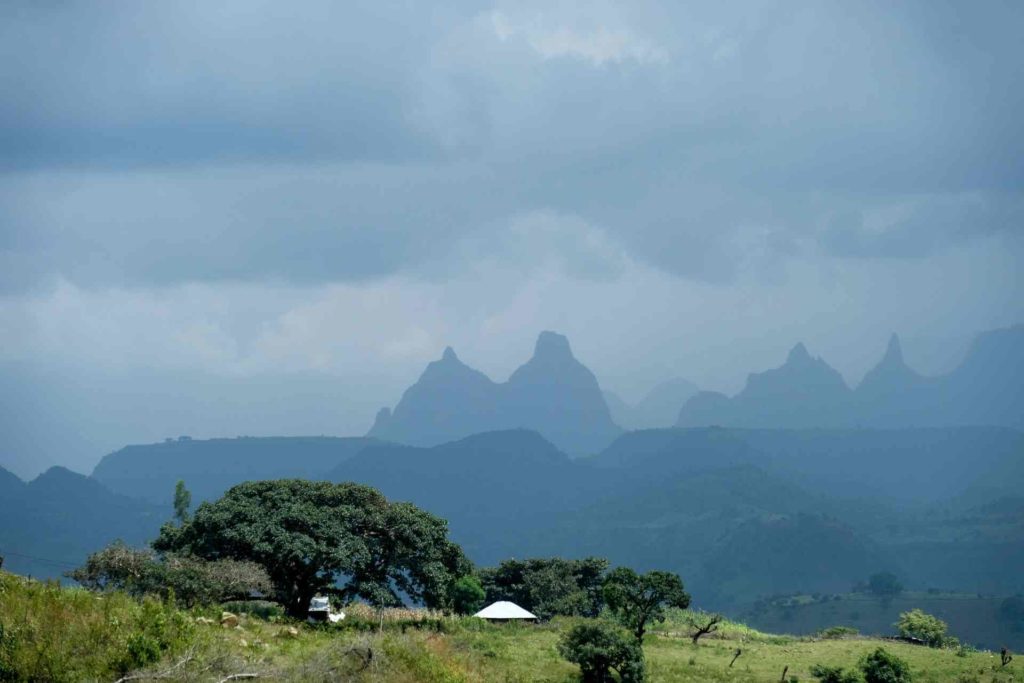
Ethiopia is a very dry and hot country which is where many “coffee countries” are located, on the coffee belt. Most of the coffee farms are actually at very high altitudes up in the Ethiopian highlands. The coffee is grown at an altitude of up to 2,300m. This altitude starves the coffee bean of oxygen and creates a more acidic brew.
The actual land area where coffee is famed comes in at around 450,000 hectares. This is then split into 4 different areas of farming including:
- Forest Coffee
- Garden Coffee
- Semi-forest Coffee
- Plantation coffee
November to February is the prime coffee harvesting season in Ethiopia where up to 65% of the workforce behind harvesting are female. However, aside from harvesting season, the rest of the year is spent planting, maintaining, and performing other various tasks, making the whole process a year-round job.
There are actually 4 primary growing regions for coffee in Ethiopia:
Harrar
Harrar is in the East near Addis Ababa (the capital of Ethiopia). The coffee from this region is sun-dried rather than wet-washed. This is important to note, as the most popular coffees from Ethiopia are usually wet washed. However, this region is different and still allows a great-tasting coffee even under different conditions.
Harrar is known for producing the oldest coffee blends and is also the highest region for growing coffee. One of the most popular characteristics of this coffee is its chocolaty flavor. It has a very rich flavor with a fruity scent, this comes from the sun drying process where the coffee beans actually dry whilst still attached to the tree inside the fruit.
Limu
Limy is another high-altitude region and one that is located in the southwest of the country. The coffee from this region is wet-processed rather than sun-dried, which alters the outcome of the coffee considerably. However, the altitude of up to 6,000Ft is the perfect condition for growing a high-quality coffee.
Coffee grown in Limu is less acidic than those grown in Harrar. This produces a balanced coffee with a nice sweet taste. There are still hints of a chocolaty taste in this coffee and also hints of spices.
Ghimbi
Like Limu, the coffee in this western location is wet-processed. The coffee here has a diverse range of flavors and notes. The coffee is also higher in acidity.
Sidamo
This region produces some exceptional coffee but plays home to a smaller, more popular location. This coffee region has a smaller region inside called Yirgacheffe which means cool grass. The coffee is grown in this region (Yirgacheffe coffee) is known for being one of the best in the world.
This coffee is grown at high elevations and is planted in extremely rich soils which all help with the flavor. The coffee itself has chocolate flavors and also notes of flowers and citrus.
Ethiopian Coffee Harvesting Process & Flavors
There are two process methods used for harvesting coffee beans in Ethiopia; natural drying and wet processing.
The natural drying method is where the coffee is left to dry out of its fruit whilst remaining on the tree, popular in the Harrar region. This process is much better for flavor instead of using machines to dry the coffee.
The wet-processing method involves removing the fruit surrounding the coffee beans with water. This allows for easy removal of the fruit without damaging the coffee inside. This is the primary method for coffee processing in Ethiopia.
Most Ethiopian coffee is processed naturally, this gives the coffee a distinct flavor and aroma. This has been a long-time tradition that has been well-kept by Ethiopian coffee producers. It’s only recently that wet processing has been recognized as another way to process coffee, but the method is ever-changing as new equipment arrives.
The coffees produced in Ethiopia are extremely popular for their diverse and exceptional flavors. They have strong chocolate, citrus, floral, and herbal notes in their coffee. It is said that many Ethiopian coffees are more like tea and some have high acidity with sweet tastes, others can have an earthy taste with less acidity. This depends on the type of coffee and the region grown.
What is the Best Ethiopian Coffee?
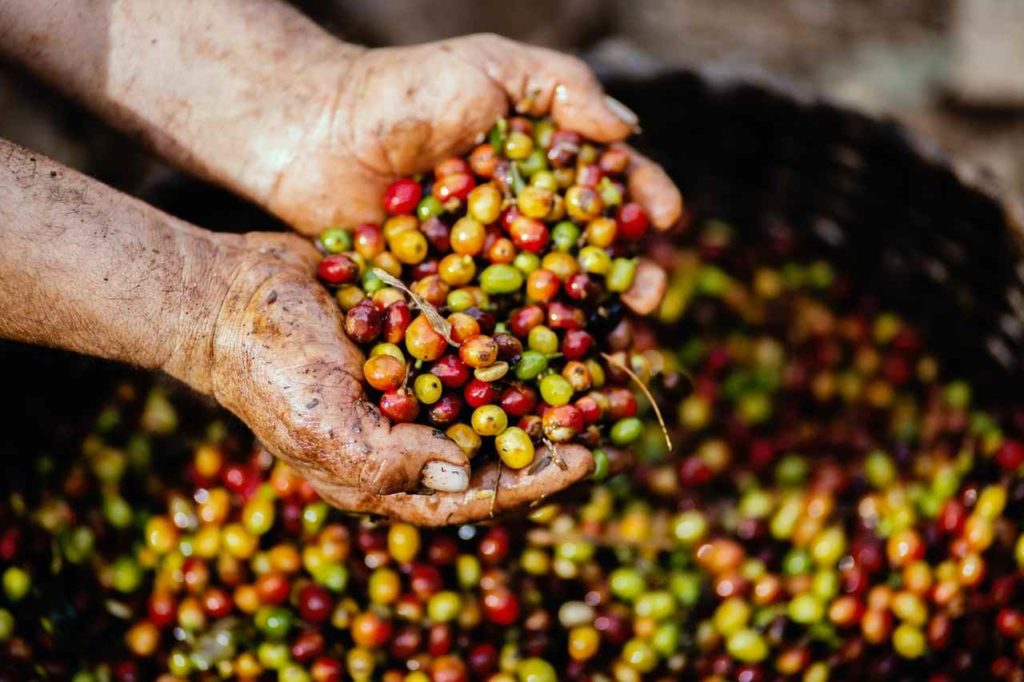
There are many different coffees out there from Ethiopia, the taste of these will be affected by how they are roasted. You might have to try more than one to find the perfect tasting coffee for your palette. These are the 5 best Ethiopian Coffees you can buy:
1. Volcanica’s Ethiopian Yirgacheffe Coffee
Volcanica’s Ethiopian Yirgacheffe Coffee is known to be the best-tasting coffee overall. When brewed, it has a bright flavor.
2. Cooper’s Ethiopian Whole Bean Coffee
Cooper’s Ethiopia is recognized as one of the best ground coffee in the market.
3. Fresh Roasted Coffee: Ethiopian Natural Sidamo
This Ethiopian Natural Sidamo is another fine example of a straightforward coffee brew. It both offers a lighter acidity with berry-like sweetness.
4. Rainier Coffee Roasters – Ethiopian Gotiti Natural
Ethiopian Gotiti Coffee has a darker, bolder flavor which is best for espresso.
5. Stumptown Coffee Roasters Ethiopia Mordecofe
Stumptown Coffee offers a sweet and peachy flavor with an easy aroma.
Brewing and Roasting Ethiopian Coffee Beans
It is recommended that when you are roasting Ethiopian coffee, you stick to light or light-medium roast to retain the notes of the coffee. This is of course down to preference, and you can experiment with medium and dark roasts to find your perfect taste.
The most popular brewing method and most recommended is the pour-over method. As Ethiopian coffee contains so many unique flavors, the pour-over coffee method is a much slower process which allows for more flavor to be retained. This could be done using a Chemex which actually uses a thicker filter and allows for a stronger flavor.
Now that iced coffees are incredibly popular, we also recommend that you try Ethiopian coffee for your iced brew. The reason why it works so well is due to the sweet notes of the coffee and no one wants a bitter cold brew. Some still might find it unsweet, but you can add some natural flavoring in to help.
We recommend having your coffee black and that you avoid adding milk or alternatives so you can enjoy the true flavors.
The Ethiopian Coffee Ceremony
Coffee plays a very important role in the Ethiopian community. The local people will spend a lot of time every day just drinking coffee. Ethiopians are heavily invested in coffee to the point where they have a social connection solely dedicated to drinking coffee – this is known as the Ethiopian Coffee Ceremony.
When you are privileged to be invited, then it is their way of showing respect and offering friendship. They have a common saying of “Buna dabo naw” which literally translates to “Coffee is our bread”. Likely referencing the metaphor of breaking bread.
The ceremony can last up to 3 hours per day, every day. This event is for the whole family to participate in and enjoy. Even the children have roles to play in the ceremony, they are the ones to serve coffee to the elders. This coffee drinking ceremony is also associated with socializing with family and guests and having great conversations.
Facts About Ethiopian Coffee
Some popular facts about Ethiopian coffee:
- Produces great-tasting Arabica coffee.
- Coffee is grown at altitudes of between 1500 and 2200 meters above sea level.
- Coffee was discovered in Kaffa in 850 AD by an Ethiopian goat herder.
- Has a coffee ceremony that can last for up to 3-hours.
- Is the 5th largest coffee exporter in the world.
- Consumes over 2 million bags of coffee in the country.
- Top growing regions include Sidamo, Limu, Yirgacheffe, and Harrar.
- 2% of the world’s coffee comes from Ethiopia.
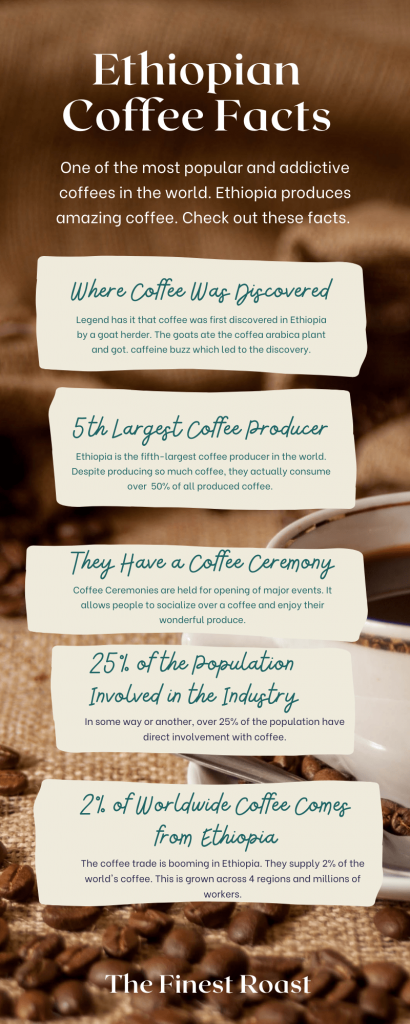
The Final Sip
Ethiopian coffee is amongst some of the best in the world, with its earthy & chocolatey notes, and full-bodied texture. Coffee in Ethiopia is essential to their economy as one of the main exporters in the world but it is also deeply embedded in their culture – with the coffee believed to have originated there.
Check out this related article on Iceland’s coffee culture.

